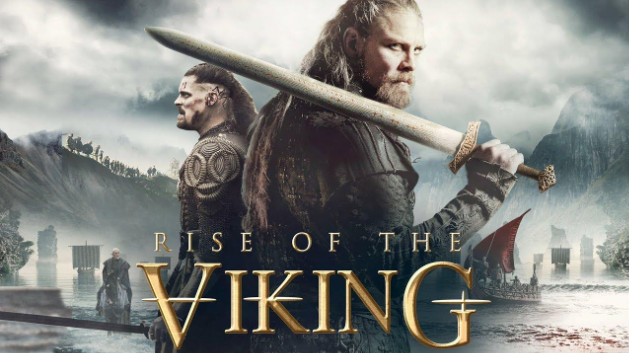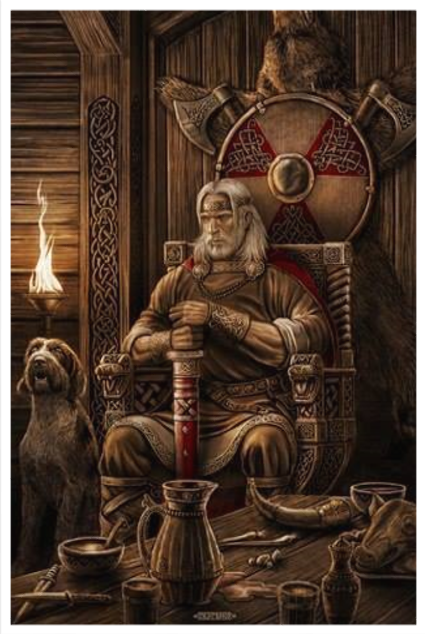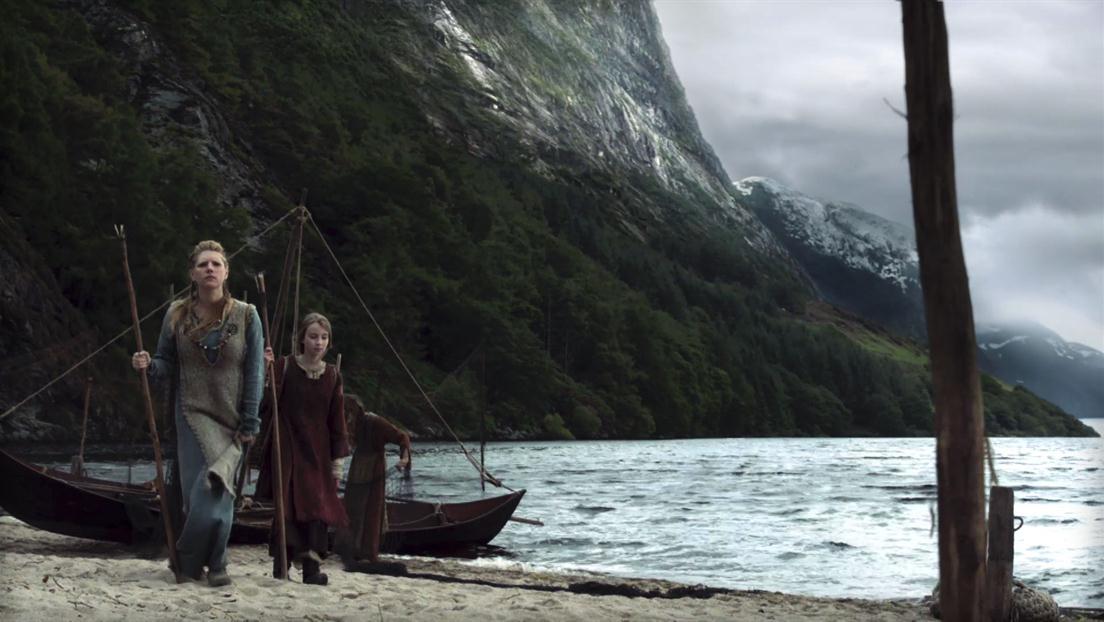The Dragon in Norse Mythology: the origins and meanings
If you are a massive fan of the Dragon and Norse Mythology, this article will help you figure out “Dragon in Norse Mythology” in all angels from origins and meanings.
Dragon has been a long time known as the most powerful mystical creature in Norse mythology. They are famous for their splendid and sometimes fearsome appearance. Moreover, they are in possession of extraordinary prowess which words could barely explain. The dragons in the modern sense are not totally evil, though in the sense they embodied it was something related to danger, natural chaotic forces, and unpredictable thoughts. Norse Myth Dragons represent the powerful forces of destruction and a great force of evil. Below we will introduce you three dragons that appeared in Norse mythology: Jormungandr, Nidhogg, and Fafnir.
Níðhöggr - the most powerful dragon in Norse mythology
In Norse mythology, Níðhöggr (Malice Striker, traditionally also spelled Níðhǫggr, often anglicized Nidhogg) is a dragon/serpent who gnaws at a root of the world tree, Yggdrasil. In historical Viking society, níð was a term for a social stigma implying the loss of honor and the status of a villain. Thus, its name might refer to its role as a horrific monster in its action of chewing the corpses of the inhabitants of Náströnd: those guilty of murder, adultery, and oath-breaking, which Norse society considered among the worst possible.
The depiction of Nidhogg
According to many depictions, Nidhogg was a giant dragon with evilly shining eyes in the darkness. His body encompassed the roots of Yggdrasil with its deadly jaws open and intending to eat corpses and roots. These depictions are understandable because Nidhogg was a dragon living at the root of the Yggdrasil - the World Tree connecting the Nine Worlds.

Nidhogg – the Corpse Gnawer
The origins of Nidhogg - The symbol of death
As mentioned above, Nidhogg lived under Yggdrasil, deep down Helheim - one of the Nine Realms of the World Tree. At first, Nidhogg ate the roots of Yggdrasil to live, however, after the encounter with Vedrfolnir - a mighty eagle lived on the top of Yggdrasil, it is crazy to destroy the Yggdrasil roots to prove its strength. And it’s impossible even how huge the dragon is. Nidhogg is considered to be the strongest mythical animal in Norse Mythology. It is so powerful that no gods can conquer it even Ragnarok could not affect it.
Jormungandr – The Mortal Enemy of Thor
Also spelled: Jormungand, Jormungander, Jormungond etc, and also known as the Midgard Serpent, or Midgard Serpent. (sometimes Midgard Wyrm).
He is a mighty dragon that encircles the world, stopping the sea from falling over the edge. Like most giant world-hugging snake-dragons he holds his tongue in his mouth as a symbol of eternity.
The depictions of the Jormungandr
The Jormungandr figure in Norse myth was illustrated as a serpent-like creature, his appearance resembled a dragon a lot though. The serpent grew so large that it was able to surround the earth and grasp its own tail. As a result, it received the name of the Midgard Serpent or World Serpent. When it releases its tail, Ragnarök will begin. Jörmungandr's arch-enemy is the thunder-god, Thor. It is an example of an ouroboros.

The origins of Jormungandr
Jormungandr is the son of the Trickster God, Loki, and a giantess, Angroboda, and is the middle child of his strange family. His older brother is the daemon wolf, Fenrir (Fenris) and his younger sister are Hel, who is half a beautiful woman and half a corpse (sometimes the split is down the middle, sometimes at the waist.)
Once upon a time, Jormungand would live in Angraboda's house, but that was before the Gods found out about Loki's affair (he was married to Sigyn, not Agraboda). When they heard about the three monstrous children they charged into Jutunheim and broke into Angraboda's house. They knew the children would be too evil to be running around, so they dealt with each one in a different way. The dragon-snake was grabbed by Odin and thrown into the sea.
It was there that Jormungand grew into a huge size, and he had to coil around Midgard (the 'Middle Earth', below Asgard, above Hel, between Niflheim and Muspell) to avoid falling off into space. When he was large enough he began to eat his own tail.
Jormungand, like a giant snake at the edge of the world, doesn't get involved in a lot of myths. But he does get a bit of excitement now and again.
Fafnir – the Greedy Guardian of Gold
Fafnir is a dragon in Norse mythology that guards the Nibelungs' gold hoard until slain by Sigurd. In the beginning, Fafnir was actually a dwarf as he was the son of Hreidmar the King of the dwarves. Fafnir then was cursed and killed his father for his gold treasure. He slowly transformed himself into a dragon form and guarded his stolen treasure in the forest. Eventually, his brother, Regin, convinced Sigurd to kill Fafnir and avenge his father’s murder. Overall, while Jormungandr and Nidhogg symbolized death, beginning, and ending, Fafnir represented the bottomless greed and chaos. Nonetheless, to some extent three of these Norse Myth Dragons posed a deadly threat to the others. Below is part of the myth:
“One upon a time there was a miserly dwarf. He had a vast hoard of golden treasure, which carried more wealth than any other treasure in the land. He had no plan to give it to anyone, and because his race could live for centuries without aging much he was going to keep the hoard all to himself for millions of years until one of his two sons killed him.
As he died the ancient dwarf cursed the treasure so that the son who killed him would, in turn, be cursed. Fafnir, however, could not care less about the curse.
Once he acquired the huge hoard he became paranoid and moved the hoard to a remote place called Gnitahead.
A few decades later, Fafnir's brother, Regin, was working for King Alf of Denmark.
The last Volsung warrior king (Sigmund) had died a few years before, so his wife, Queen Hjordis, remarried and came to live with King Alf, taking the son from the first marriage, Seigfried, with her. King Alf was a good king and loved both his own children and his step-son. Seigfried's warrior/Viking/king blood made him a natural leader, but as he had none of King Alf's blood in him he could never be his successor.”
So you just go through the origins of three popular dragons in Norse mythology. If you’re interested in other Viking stuff, subscribe us at https://haquil.com/blogs/viking




